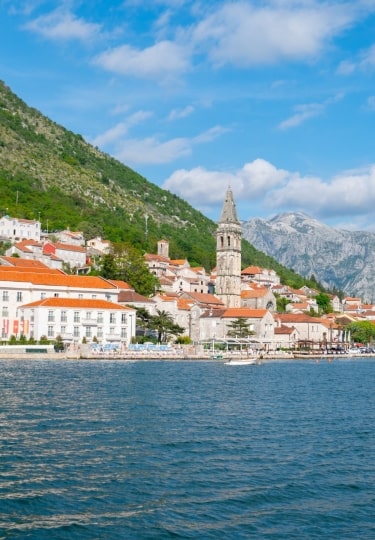The best time to visit Montenegro is between April and September, a period that encompasses spring, summer, and early fall. October and November can also see mild, sunny weather.
In this small country, which has 183 miles of coastline bordering Croatia to the north and Albania to the south, there are different climate zones. The coast enjoys a Mediterranean climate, with hot summers and mild winters.
Inland, however, the landscape is mountainous, with a continental climate. Winters here are much colder and wetter, especially at altitude.
Visiting Montenegro By Season
Summer
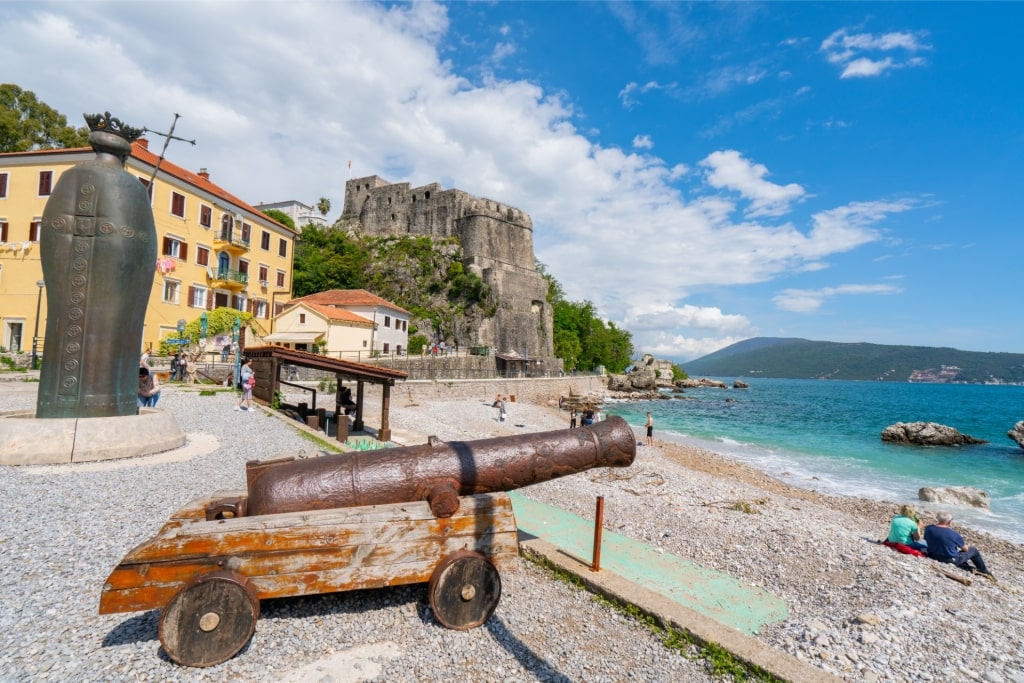
Kotor Bay
June, July, and August bring fine, mainly dry weather, with average daily temperatures of 78.3°F (25.7°C) and highs of 88°F (31.3°C). Rainfall is low. July is the driest month, receiving just 1.1 inches (28mm) on the coast. Occasional thunderstorms are possible, though.
Pace yourself in the heat, especially if you are planning to walk the ancient ramparts that snake up the mountainside behind Kotor. Take water and stop for frequent breaks.
Hiking aside, summer is a time for kayaking the sheltered Bay of Kotor, and enjoying the beaches and crystal clear waters around Bar. On the coast, the heat is often tempered by a welcome sea breeze.
Fall
September is the best time to go to Montenegro if you’re in search of slightly lower temperatures and a climate more suited to hiking and exploring the outdoors. The average daily temperature is 71.1°F (21.7°C), which is still easily warm enough to enjoy outdoor dining in a sunlit square.
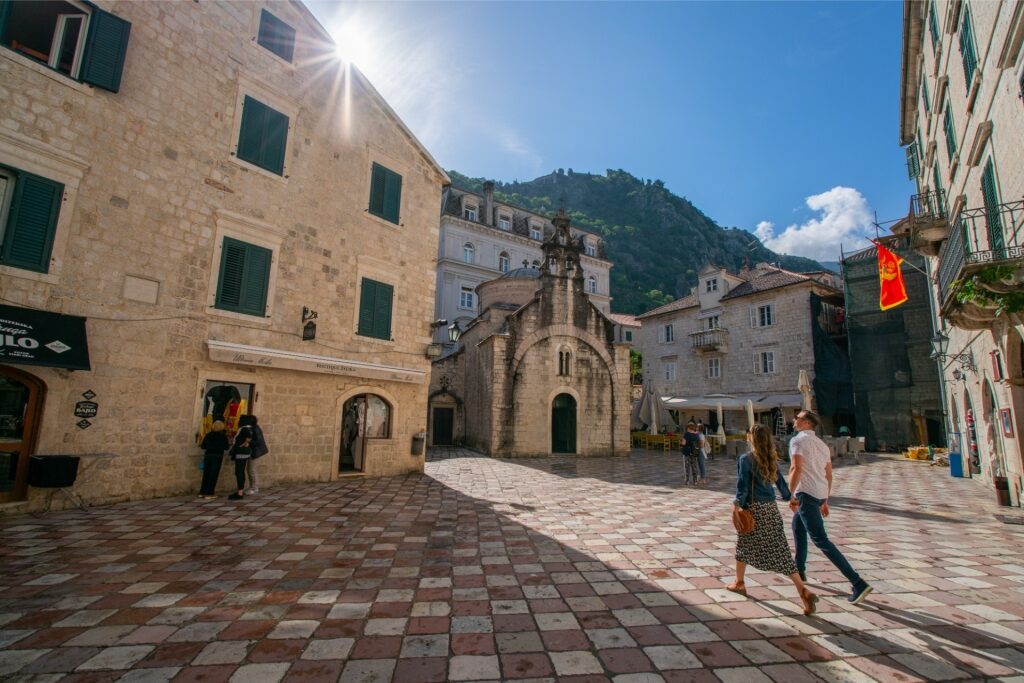
Old Town Kotor
Rainfall begins to increase; September receives an average of 4.4 inches (112mm) over six days. October is a little cooler and wetter but still pleasant, while November is the rainiest month of the year, with 6.6 inches (117mm) on average falling on the coast.
Right up to October, the sea will still be delightfully warm for swimming and the summer crowds will be thinning out, as European summer holidays draw to a close.
Winter
December, January, and February in Montenegro are cool and often rainy. January is the coldest month, with average temperatures of 45.6°F (7.6°C) and 5.5 inches (140mm) of rainfall. Frost and snow are rare on the coast, although inland, precipitation in the mountains will fall as snow at higher altitudes. Winters, and late fall, for that matter, can feel cold because of the Bora wind, which blows from the east.
Many seasonal restaurants and bars are closed in winter, when locals take their own vacations. December is an exception, as the country gears up for Christmas, with advent markets appearing in many towns. Note that Montenegro, which follows the Eastern Orthodox faith, celebrates Christmas Eve on January 6 and Christmas Day on January 7.
Spring
Spring is a wonderful time to visit Montenegro, especially as the mercury starts to rise. In May, expect average temperatures of 65.8°F (18.8°C) and rainfall down to 3.1 inches (78mm). The spring flowers are in bloom, and you’ll see the first apricots, strawberries, and cherries in the markets.
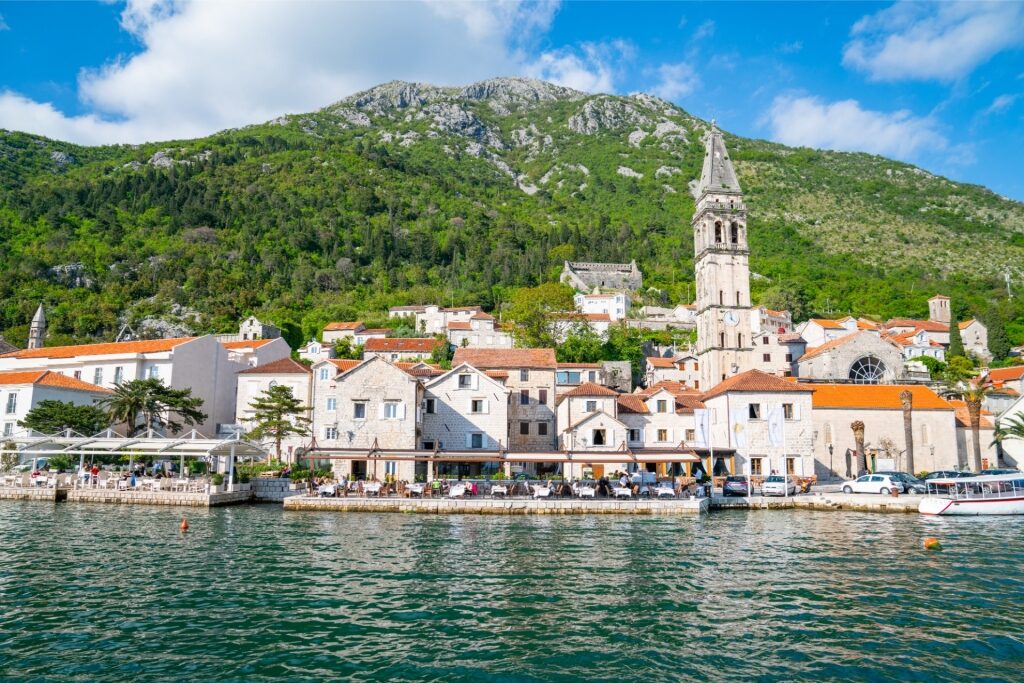
Perast
The Adriatic will still be cool for swimming in spring, unless you enjoy a cold water dip. This is a time for hiking, kayaking, and boat trips along the beautiful, 17-mile-long Bay of Kotor, where mountains plunge into the water and tiny villages line the banks.
Orthodox Easter falls in spring and is a time of processions and open-air religious services, which are always atmospheric and interesting to observe.
When Is Rainy Season?
Montenegro has a typically Mediterranean climate along its coast, with the most rain falling between November and March. Rainfall tails off once April arrives.
Inland, there’s heavy rain in winter; away from the coast, Montenegro is one of the rainiest countries in Europe.
When Is High Season?
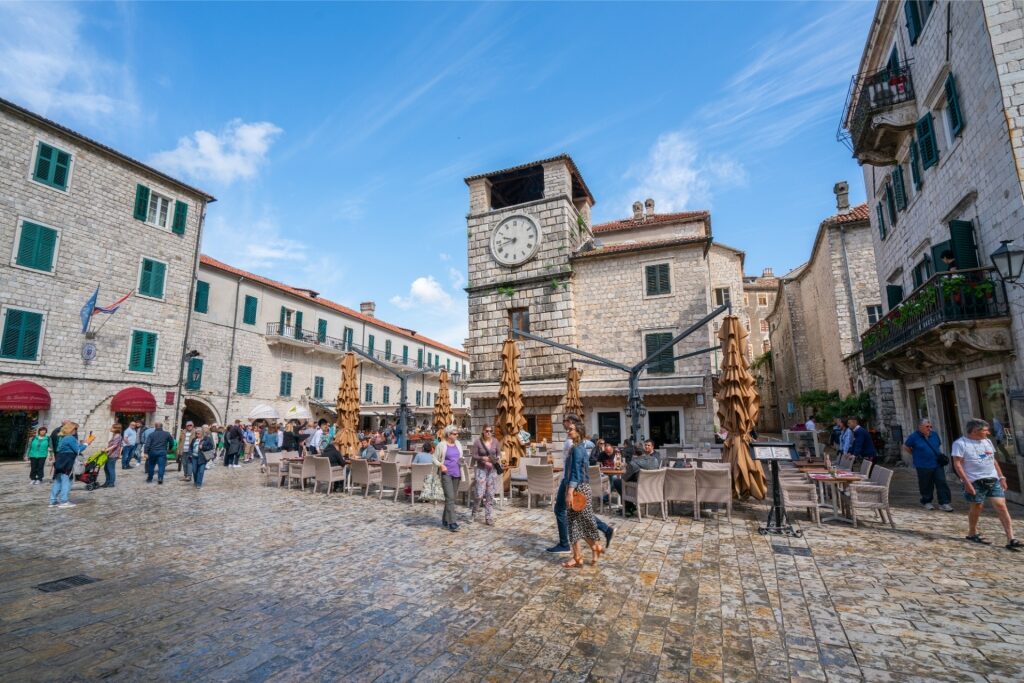
Old Town Kotor
High season in Montenegro is July and August. This is when much of Europe is on summer vacation and Montenegrins themselves head to the coast for long, hot, sunny days.
There are festivals and celebrations, the coastal towns and Kotor buzzing with energy. Montenegro’s beaches can get quite crowded, so arrive early to secure your spot.
When Is Shoulder Season?
Shoulder season in Montenegro is the late spring and early summer, May and early June, as well as September, October, and early November. There may be more rainfall in this off-peak time but the climate is still mild and pleasant.
This is a perfect time for sightseeing. You’ll have the bonus of spring flowers in May and June, and the celebration of the wine harvest in September and October.
When Is Low Season?
Montenegro has a defined low season from late November to March, when there’s considerable rainfall. Cities like Kotor are not shut down, as such, as they have a year-round population. Compared to summer, however, this is a quiet time to visit.
Read: Best Places to Visit in Montenegro

Old Town Kotor
Browse Celebrity’s cruises to Montenegro here and plan your next adventure in this beautiful part of the world.
